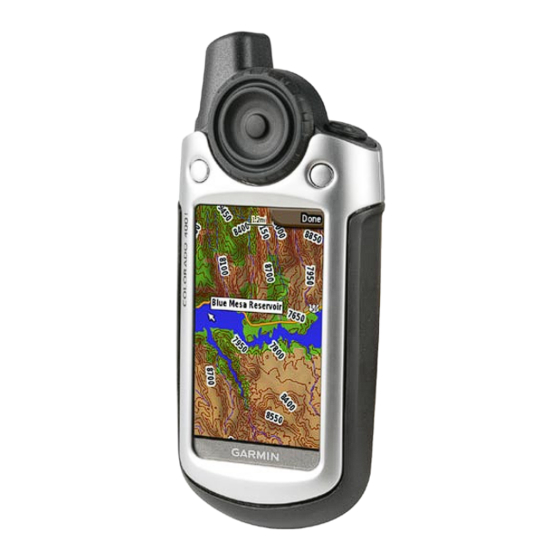
Table of Contents
Advertisement
Quick Links
Advertisement
Table of Contents

Summary of Contents for Garmin GPS
- Page 1 GPS Beginner’s Guide April, 2008 190-00224-00 Rev. B Printed in Taiwan...
-
Page 2: Table Of Contents
Recreation................. Space ..................Surveying.................. Timing..................WAAS/EGNOS ................Sources of Errors ..............Buying.a.GPS.Receiver............7 Complementary Navigation Aids ..........Why.Choose.Garmin ?............8 ® Garmin.Product.Overview...........8 Avionics ..................Marine ..................Outdoor ..................Mobile Electronics ..............GPS Beginner’s Guide... - Page 3 Information in this document is subject to change without notice. Garmin reserves the right to change or improve its products and to make changes in the content without obligation to notify any person or organization of such changes or improvements. Visit the Garmin Web site (www.garmin.com) for current updates and supplemental information concerning the use and operation of this and other Garmin products.
-
Page 4: Introduction
(such as underwater locations). The GPS satellites are powered by solar energy. If solar energy is unavailable, for example, when the satellite is in the earth’s shadow, the satellites use backup batteries to continue running. -
Page 5: Monitor Stations
Your GPS receiver displays the applicable information on the screen. Who.Uses.GPS? GPS technology has many amazing applications on land, at sea, and in the air. You might be surprised to learn about the following examples of how people or professions are already using GPS technology: Agriculture In precision farming, GPS technology helps monitor the application of fertilizer and pesticides. -
Page 6: Ground.transportation
Surveyors use GPS technology for simple tasks (such as defining property lines) or for complex tasks (such as building infrastructures in urban centers). Locating a precise point of reference used to be very time consuming. With GPS technology, two people can survey dozens of control points in an hour. -
Page 7: Waas/Egnos
Sources.of.Errors Errors can affect the accuracy of the GPS signal. Take your GPS receiver to an area with a wide and unobstructed view of the sky to reduce the possibility and impact of some errors. Here are some of the most common GPS errors. -
Page 8: Complementary Navigation Aids
GPS receiver. Your preference for map detail and your specific activities determine which software is right for you. Complementary.Navigation.Aids Remember, a GPS receiver is a complement to navigation and should not be the only navigational tool that you use. Using a paper map, a simple compass, and having knowledge of manual navigation is a good, safe practice. - Page 9 • Free downloads of product manuals • Free downloads of the latest unit operating software For more detailed information on GPS technology, refer to the following Web sites: • For more information about GPS technology, visit http://gps.faa.gov. • For more information about the current status of the GPS satellites, visit http://tycho.usno.navy.mil/gpscurr.html.












Need help?
Do you have a question about the GPS and is the answer not in the manual?
Questions and answers